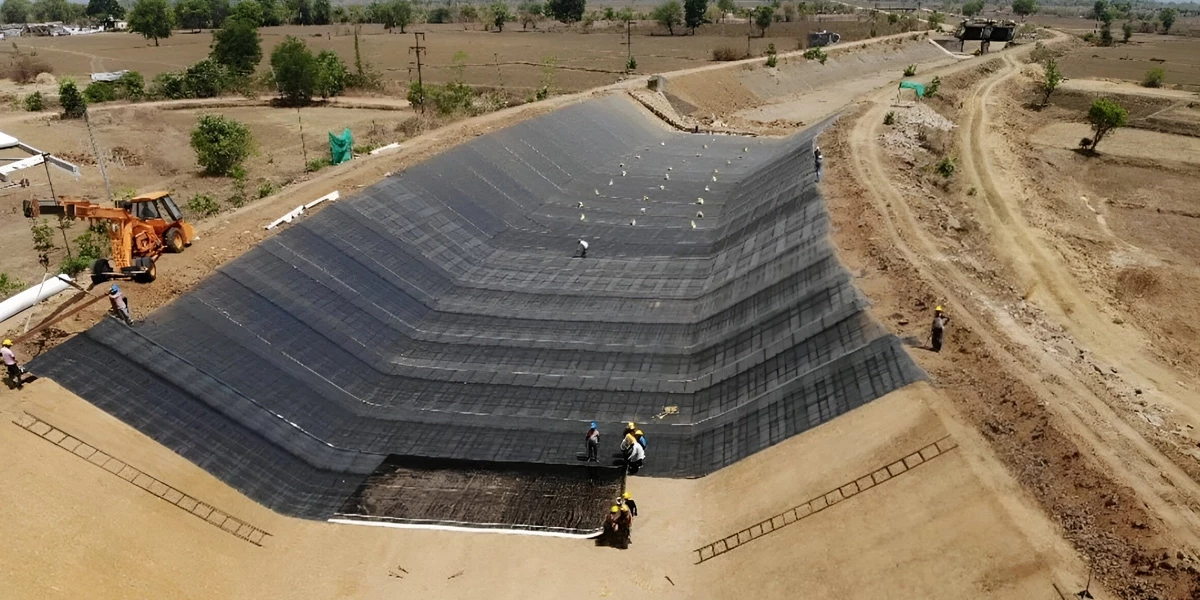

Water is the essence of life, yet scarce water is one of the topmost challenges of the present day. From decreasing water tables to erratic climate behaviours, it is now evident that water conservation has assumed paramount importance in light of vast pressures on use, management, and efficiency. And at the same time, infrastructure durability remains a major concern as we build for the future. It is in this arena that geo membranes come to be a quiet yet dynamic force of changes in the methods of water conservation.
With cutting-edge technology and a commitment to sustainable development, Yooil Envirotech leads the way in offering advanced geomembrane solutions to change the face of water conservation and infrastructure protection.
Geo membrane is an impermeable barrier made from elaborate polymers or bitumen compounds. Their primary function is to inhibit fluid migration; hence, they become vital in many other customer-specific markets such as in water management, mining, agriculture, environmental improvement, etc. Tough membranes such as these are made to resist the ravages of environmental stress and provide durability and functionality in an array of situations.
In response to the growing demand for innovative solutions, Yooil Envirotech offers advanced geomembranes that strongly contribute to water retention, environmental protection, and stabilization of infrastructure across industries.
High-Density Polyethylene (HDPE) Geomembranes
Low-Density Polyethylene (LDPE) Geomembranes
Linear Low-Density Polyethylene (LLDPE) Geomembranes
Polyvinyl Chloride (PVC) Geomembranes
Ethylene Propylene Diene Monomer (EPDM) Geomembranes
Bituminous Geomembranes (BGM)
Chlorosulfonated Polyethylene (CSPE) Geomembranes (Hypalon)
Sand-Coated Geomembranes
Depending on various factors, different types of geomembrane are used, such as chemical resistance, type of flexibility, durability, and environmental conditions. Please provide a more specific detail about each for additional information.
Every drop of water is bestowed with more value, and geomembrane installation functions as a guardian against wastage. Whether they line reservoirs, canals, or ponds, few applications include erosion control, oil containment in canals, lagoons, and barrels, and stabilizing structures against lateral loads through a filter layer. They significantly reduce seepage and needless water loss to the surroundings.
Geo membranes strengthen the very foundation of infrastructure in water preservation. These membranes represent unprecedented defence from the elements when it comes to roadworks, tunnels, and landfills.
Among the types of geo membranes, bituminous geomembrane (BGM) prove extremely resilient and flexible. They are reinforced non-woven geotextiles impregnated with elastomeric bitumen and perform superbly with regard to water conservation and infrastructure protection.
By applying state-of-the-art technology to BGM, Yooil Envirotech industrial provides enhanced waterproofing solutions with high performance and sustainable durability.
Why Choose BGM?
The geo membranes possess unique significance for their relevance in varied water conservation and environmental protection endeavours, with certain useful applications being demonstrated here:
As we run towards the future to make sustainability not optional but a necessity, geo membranes elude themself and promise an unprecedented touch of hope to water conservation and infrastructure resilience. They represent the guardianship of resources, reinforcement in infrastructure, and environmental protection that amalgamate together in modernity.
Consequently, Yooil Envirotech shalls advance its governing innovations in geomembrane, so industries might start moving toward a water conservation and durable infrastructure future.
Investing in advanced solutions like geo membranes today ensures that future generations inherit a world where water is preserved and infrastructure stands the test of time. With innovation and dedication, we can pave the way for a sustainable tomorrow—one drop, one structure, and one step at a time.
